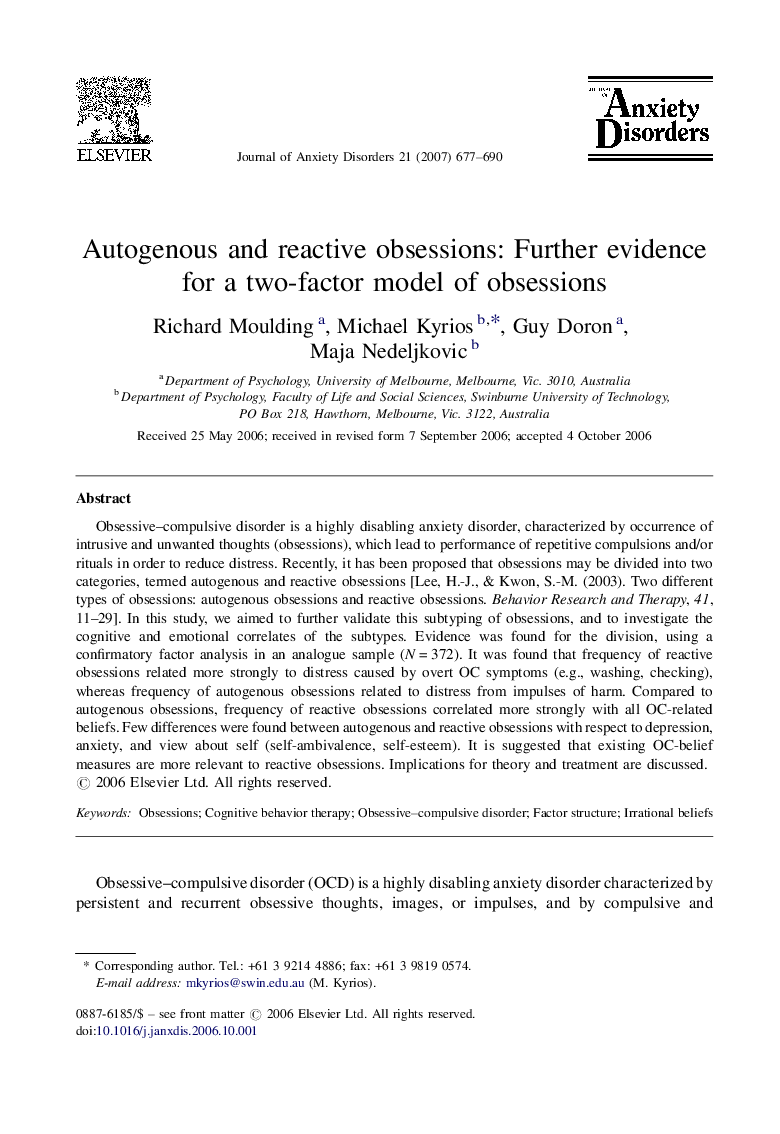| کد مقاله | کد نشریه | سال انتشار | مقاله انگلیسی | نسخه تمام متن |
|---|---|---|---|---|
| 910176 | 917335 | 2007 | 14 صفحه PDF | دانلود رایگان |

Obsessive–compulsive disorder is a highly disabling anxiety disorder, characterized by occurrence of intrusive and unwanted thoughts (obsessions), which lead to performance of repetitive compulsions and/or rituals in order to reduce distress. Recently, it has been proposed that obsessions may be divided into two categories, termed autogenous and reactive obsessions [Lee, H.-J., & Kwon, S.-M. (2003). Two different types of obsessions: autogenous obsessions and reactive obsessions. Behavior Research and Therapy, 41, 11–29]. In this study, we aimed to further validate this subtyping of obsessions, and to investigate the cognitive and emotional correlates of the subtypes. Evidence was found for the division, using a confirmatory factor analysis in an analogue sample (N = 372). It was found that frequency of reactive obsessions related more strongly to distress caused by overt OC symptoms (e.g., washing, checking), whereas frequency of autogenous obsessions related to distress from impulses of harm. Compared to autogenous obsessions, frequency of reactive obsessions correlated more strongly with all OC-related beliefs. Few differences were found between autogenous and reactive obsessions with respect to depression, anxiety, and view about self (self-ambivalence, self-esteem). It is suggested that existing OC-belief measures are more relevant to reactive obsessions. Implications for theory and treatment are discussed.
Journal: Journal of Anxiety Disorders - Volume 21, Issue 5, 2007, Pages 677–690